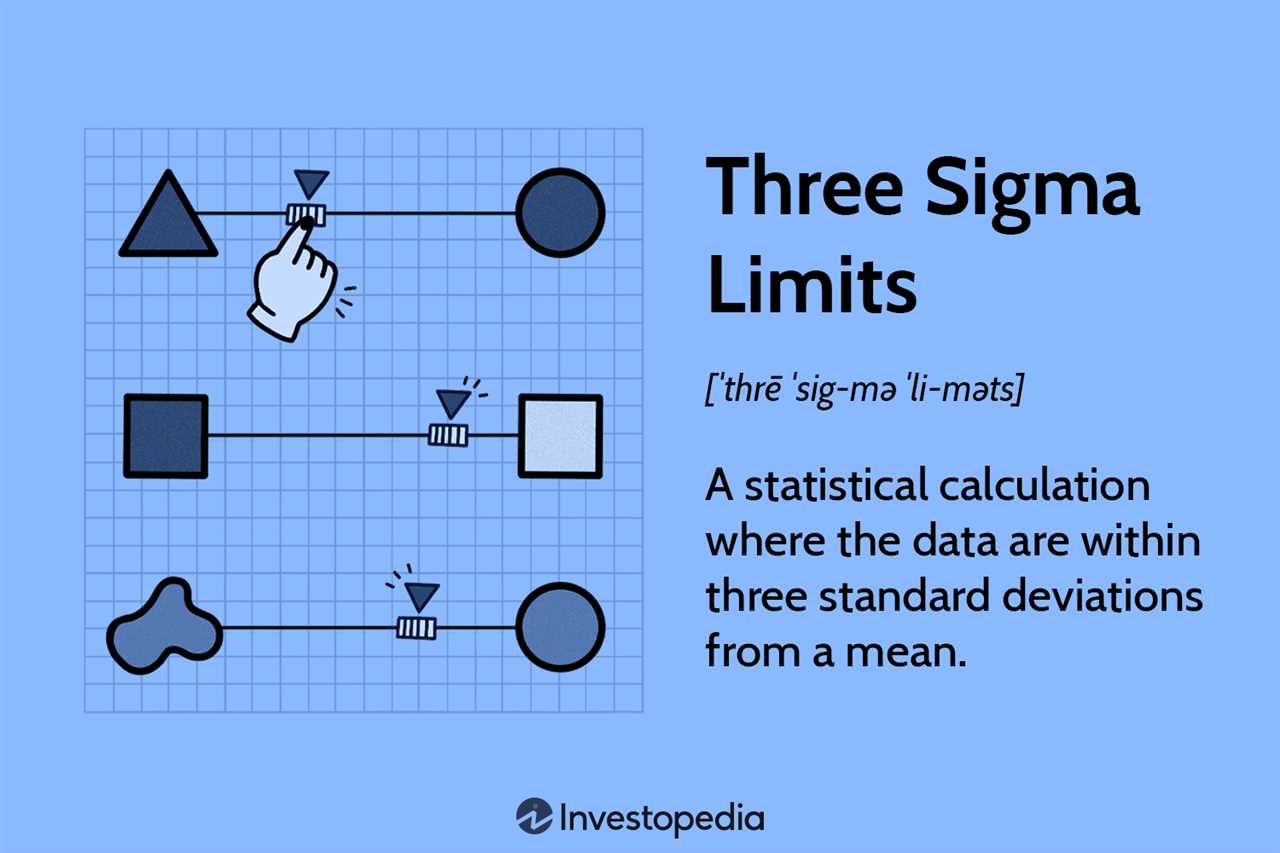Calculating Three Sigma Limits: A Statistical Example

To calculate three sigma limits, you need to follow a step-by-step process:
Step 1: Collect Data
Start by gathering the data you want to analyze. This could be financial data such as stock prices, revenue figures, or any other relevant metrics.
Step 2: Calculate the Mean
Next, calculate the mean of the data set. The mean is the average value and is calculated by summing up all the data points and dividing by the total number of data points.
Step 3: Calculate the Standard Deviation
The standard deviation measures the dispersion of the data points around the mean. It quantifies how much the data points deviate from the average. To calculate the standard deviation, subtract the mean from each data point, square the result, sum up all the squared values, divide by the total number of data points, and then take the square root of the result.
Step 4: Calculate Three Sigma Limits
Finally, you can calculate the three sigma limits. These limits are determined by multiplying the standard deviation by three and adding or subtracting the result from the mean. The upper three sigma limit is obtained by adding three times the standard deviation to the mean, while the lower three sigma limit is obtained by subtracting three times the standard deviation from the mean.
By calculating and analyzing the three sigma limits, you can identify outliers, anomalies, or trends in your financial data. Data points that fall outside the three sigma limits are considered statistically significant and may require further investigation.
By calculating three sigma limits, analysts can determine the range within which the majority of data points are expected to fall. This range is considered to be statistically significant and can help identify outliers or abnormal data points that may indicate potential risks or opportunities.
To calculate three sigma limits, the following steps are typically followed:
- Collect a set of data points relevant to the financial analysis.
- Calculate the mean (average) of the data points.
- Calculate the standard deviation of the data points.
- Multiply the standard deviation by three to obtain the upper and lower limits.
- Plot the data points on a graph and mark the three sigma limits.
Once the three sigma limits have been calculated and plotted, analysts can visually assess the distribution of data points and identify any potential outliers. Data points that fall outside the three sigma limits may require further investigation to determine the underlying causes.
Step-by-Step Guide to Calculating Three Sigma Limits

Calculating three sigma limits is an important statistical analysis technique used in financial analysis. These limits help identify outliers and determine the range within which most data points fall. Here is a step-by-step guide on how to calculate three sigma limits:
Step 1: Collect the Data
The first step is to gather the data that you want to analyze. This could be financial data such as stock prices, sales figures, or any other numerical data that you want to evaluate.
Step 2: Calculate the Mean
Next, calculate the mean of the data set. The mean is the average value and is calculated by summing up all the data points and dividing by the total number of data points.
Step 3: Calculate the Standard Deviation
After finding the mean, calculate the standard deviation of the data set. The standard deviation measures the dispersion of the data points around the mean. It shows how much the data deviates from the average value.
Step 4: Calculate Three Sigma Limits
To calculate the three sigma limits, multiply the standard deviation by three and add/subtract the result from the mean. This will give you the upper and lower limits within which most data points should fall. The formula for calculating the three sigma limits is:
Upper Limit = Mean + (3 * Standard Deviation)
Step 5: Analyze the Data
Once you have calculated the three sigma limits, you can start analyzing the data. Any data points that fall outside the three sigma limits can be considered outliers or unusual observations. These data points may require further investigation to understand the reasons behind their deviation from the norm.
By calculating three sigma limits, you can gain valuable insights into the distribution and variability of your data. This analysis technique is widely used in financial analysis to identify trends, detect anomalies, and make informed decisions based on statistical evidence.

Emily Bibb simplifies finance through bestselling books and articles, bridging complex concepts for everyday understanding. Engaging audiences via social media, she shares insights for financial success. Active in seminars and philanthropy, Bibb aims to create a more financially informed society, driven by her passion for empowering others.
